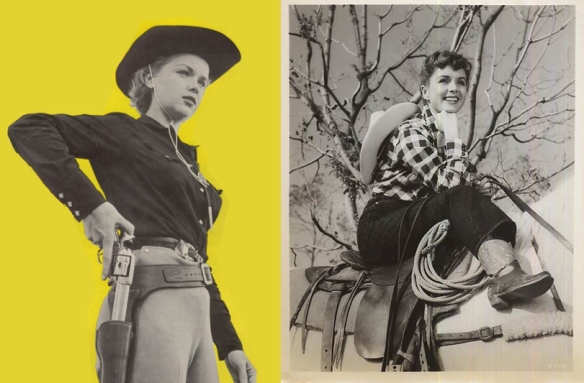It’s Monday morning, and these Saul Steinberg masks are capturing perfectly the wealth of emotion I’m feeling about my alarm, the commute, and getting to work on time.






Category Archives: Vintage Love
Light Rail
We all know that they just don’t build them like they used to, and that’s especially apparent when looking at this amazing 1940’s photos from Chicago’s Union Station. These days the Great Hall is rented out for events, but during WWII when commuters traveled through it every day, officials decided to black out the building’s skylights in an attempt to hide it from potential enemy aircraft. The tall clerestory windows at each end were left as the only light source, which resulted in these moody, dramatically-lit scenes. Perfect for a film noir, wouldn’t you say?




Blast Off
The early 70s are a fascinating moment. After the upheaval of the 60s and the backsliding of the 80s, there was a moment when things actually seemed to be getting better. The Vietnam War had come to an end, and the women’s movement was gaining ground with Roe vs. Wade and the passing of the ERA. Progress had been made in Civil Rights, and identity movements like Black Power were raising people’s consciousness. Environmentalism and nuclear proliferation were being talked about.
All these new thoughts were making it into the mainstream finally, too. You look back at early episodes of Sesame Street, for instance, and the cast is a rainbow of colors and abilities, everyone singing together, looking vaguely hippied-out and unpolished. Of course there were still problems, but for once there were glimmers of hope to be seen in pop culture– moments of progress that seem progressive, even by our standards today.
Case in point: the wonderful children’s book Blast Off from 1973.  Blast Off is the story of Regina, a young black girl who dreams of becoming an astronaut. Her friends laugh at her crazy ideas, but she eventually makes it to the stars, floating among them in her white spacesuit, riding a rocket shooting long, psychedelic trails of fire.
Blast Off is the story of Regina, a young black girl who dreams of becoming an astronaut. Her friends laugh at her crazy ideas, but she eventually makes it to the stars, floating among them in her white spacesuit, riding a rocket shooting long, psychedelic trails of fire.
This is only a few years after the moon landing, and space travel was still pretty novel, as was a woman of color in space. Sally Ride wouldn’t go up in the shuttle for another decade, and Mae Jemison nearly ten years later in 1992.
In addition to being way ahead of its time, the illustrations are absolutely charming, featuring bold, graphic shapes and groovy colors. Definitely the kind of space travel I can get behind. You gotta give it to 1973– they had some good ideas.
Via Brain Pickings.
Here’s to Halloween Weirdos
Blueprint Decorating
We attended an estate sale a few weeks back at the home of a man who turned out to have been an architect or engineer of some sort. His belongings included vintage drawing supplies– pencils, rulers, drafting tape– along with a few bins full of rolled-up old blueprints. I dug through a few of them and we eventually took home a huge black role with detailed diagrams for a mystery machine of some sort.
Our bedroom contains large swathes of wall that I have yet to really figure out. A few years ago I made an engineering print at Kinkos of a vintage photo of a giraffe from the Lincoln Park Zoo (the caption informed me that her name was Cleopatra) that hung above our bed. Best $6 I ever spent, but since the paper is thin, it took a beating through a few summers of fans blowing on it– not to mention mischievous toddler fingers– and fell down for good a few weeks back. I thought that the blueprint (or, more accurately, blackprint) would be a fun addition to the room. It’s tough to find affordable art that will fill such a large space, but the print may just do the trick.

Unflattering photos of our bedroom taken over by dogs and stuffed animals. This is the bed I’ve got of the drafting print giraffe before it fell off the wall for good.
I have yet to actually hang it up (story of my life), but in the interim I looked a bit on the internet for examples of how other people have incorporated blueprints into their decor. Pinterest was surprisingly light on examples (does that mean I’m a trendsetter?!) but Apartment Therapy had one post about the idea. All in all, I love the bright pop of blue that true blueprints offer, and think they add a fun, abstract element.

A really lovely example of framed blueprints. I wonder if they are the original plans for that house?
I’ll keep you posted if we do ever get around to hanging ours and take photos without random laundry and dogs in the picture ; )
School Days, Preserved
It’s always interesting to think about the history of the places where we spend our time. As the owner of a 120 year old home, I think about the people who built this little workers’ cottage originally, and all the families that must have lived here over more than a century. There are so many stories hidden in old places.
This story from an Oklahoma City high school illustrates this idea perfectly– a crew was renovating the classroom in the old building and discovered perfectly preserved blackboards hidden beneath the walls. Covered over in 1917, the boards were perfectly preserved, with multiple subjects, student’s names and drawings still clearly visible.
Vintage Cowgirls
It’s fair to say that the myth of the cowboy can be a little problematic. Manifest destiny, a West to be “won,” and an uneasy relationship (to say the least) with Native Americans– the narratives don’t hold up as well as they once did, and I’m always a little hesitant to embrace the motif of the “cutesy” cowboy. That said, there’s something about a cowgirl that still resonates. A cowgirl is inherently subversive– breaking the mold simply by existing. So whether it’s still harkening to a frontier written by Wild Bill and Hollywood, there is still something to be said for celebrating ladies doing it for themselves out on the range.

 For extra credit: this discussion on the “Women and the Myth of the American West”from the Smithsonian.
For extra credit: this discussion on the “Women and the Myth of the American West”from the Smithsonian.
Vintage Poland
I found the most wonderful vintage illustrations via Pinterest the other day. Unfortunately, the source website is all in Polish and what I was able to translate wasn’t super clear. From what I can gather, these are midcentury postcards, telegrams and Christmas cards. But really, Polish or not, the pictures will tell you everything you need to know.
What Frida Wore
Sometimes it’s hard to remember that Frida Kahlo didn’t live all that long ago. She’s become lionized as a painter, feminist, communist, Mexican icon, as a person living with a disability in a time when that wasn’t something to be spoken of. She was fierce and boundary defying.
The show “Frida by Ishiuchi Miyako” opened this month in London, documenting Kahlo’s own possessions in a stark and intimate series of photographs. The story goes that Diego Rivera locked away Frida’s belongings in a room in their home after her death with instructions that they not be disturbed until 15 years after his death. The room was finally opened up 2004, and these photos are some of the public’s first glimpses at these fragments of Frida’s life.






 While her clothing are undeniably fascinating, it was a photo of two bottles of Revlon nail polish that struck me the most– they look nearly identical to bottles I own, smudged and half-empty. It’s a reminder that while the Frida Kahlo we tend to think of today has become something of a symbol, she was a very real woman first.
While her clothing are undeniably fascinating, it was a photo of two bottles of Revlon nail polish that struck me the most– they look nearly identical to bottles I own, smudged and half-empty. It’s a reminder that while the Frida Kahlo we tend to think of today has become something of a symbol, she was a very real woman first.
Take Me to the Zoo
One part constructivist heroics, one part WPA-style icon-making, these 1963 Prague zoo matchbook labels from Oliver Tomas’ amazing collection are making my Thursday a little brighter.
via DesignWorkLife.






